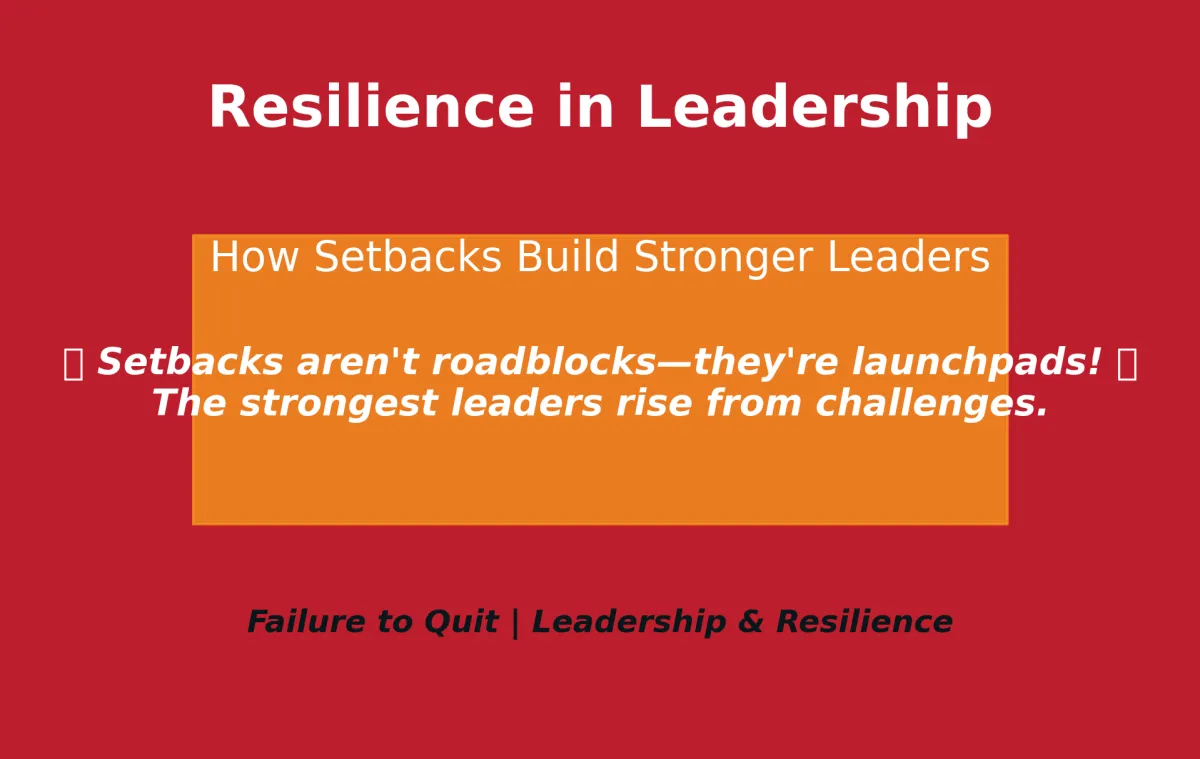Insights for Growth

Resilience in Leadership: How Setbacks Build Stronger Leaders
Resilience in Leadership: How Setbacks Build Stronger Leaders
Introduction
Leadership isn’t about how well things go when everything runs smoothly. True leadership is tested in times of crisis. Failure is inevitable, but how leaders respond to adversity defines their success. Resilience isn’t just about bouncing back—it’s about learning, adapting, and emerging stronger.
One of the most defining moments of my career was leading a multibillion-dollar network rollout project that was in serious jeopardy. The customer was unhappy due to poor network performance, and the financials were severely in the red. The contract was at risk. Instead of walking away, I took ownership, realigned with the customer, and collaborated with my team to turn the situation around. Within six months, we had transformed the project, ensuring both customer satisfaction and financial recovery. That experience taught me invaluable lessons about resilience, stakeholder alignment, and realistic goal-setting—lessons that every leader can apply.
The Psychology of Resilience
Resilient leaders cultivate the right mindset and skill set to navigate challenges effectively. Research highlights three key traits of resilient leaders:
✅ Emotional Agility: The ability to stay calm and adaptive in the face of stress.
✅ Growth Mindset: Viewing challenges as opportunities to learn and grow.
✅ Strategic Adaptability: The willingness to pivot when a plan isn’t working.
When my network rollout project faced a crisis, these traits helped me stay solution-focused, collaborate effectively, and lead with clarity.
How Great Leaders Use Setbacks to Grow
Failure can be a catalyst for growth when handled correctly. Here’s how leaders turn setbacks into opportunities:
🔹 Own the Problem – True leaders take responsibility. When my project was falling apart, I acknowledged reality and faced it head-on.
🔹 Align Priorities with Stakeholders – Instead of assuming what the customer wanted, I engaged in direct conversations. That clarity helped rebuild trust.
🔹 Re-engage the Team with a Clear Plan – Leadership means guiding a team through uncertainty. With clear priorities, we created a strategy that met customer goals while improving financials.
🔹 Commit to the Long Game – Fixing the project took six months of disciplined execution, financial management, and constant communication. But in the end, we turned a near-failure into a success story.
Key Lessons in Resilience
Through this experience, I learned three critical leadership lessons:
1️⃣ Failure is Not the End—It’s a Pivot Point – Every major setback presents an opportunity to reassess and improve.
2️⃣ Transparency and Alignment Build Trust – Open communication strengthens relationships with customers, employees, and stakeholders.
3️⃣ Big Turnarounds Require Realistic Goal-Setting – Small, strategic wins build momentum and ensure sustainable success.
Conclusion: Strengthening Resilience in Your Leadership
Resilience isn’t about avoiding failure—it’s about learning to navigate it effectively. The best leaders embrace challenges, take ownership of problems, and lead their teams through adversity with clarity and purpose. Every challenge is an opportunity to grow.
What’s one failure that shaped your leadership style? Share your experiences in the comments—I’d love to hear your insights!
TESTIMONIALS
What others are saying

"Loved everything so far"
"Through Tim’s coaching, I transformed my business from chaos from operational challenges to streamlined and scaling new markets."
- John, Business Owner


"My life changed forever"
"I was about to give up! I was tired of failing but Tim wouldn't let me quit. I grew my business operations and regained control of my life!"
- Tina, Business Consultant


"Gained visibility and confidence"
"Tim’s guidance helped me break through internal barriers, gaining the confidence and visibility I needed to secure my promotion to VP."
- Sarah, Executive Leader

Take the First Step Toward Transformation—Schedule Your Free Strategy Session Now.






Better business, higher revenue, more conversions.
Quick Links
Home
About
Services
Press
Book a Consultation
Legal
Privacy Policy
Terms & Conditions
Connect
© {{location.name}} {{right_now.year}}
All Rights Reserved

